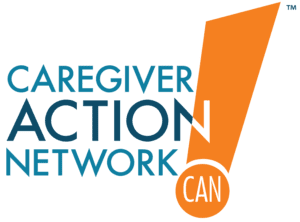Employer Policy Recommendations to Support Employees Who Are Caregivers
Employer Policy Recommendations to Support Employees Who Are Caregivers
Supporting employees with caregiving responsibilities is essential for fostering a compassionate, inclusive, and productive workplace. Below is a comprehensive list of policy recommendations and best practices.
Employer Policy Recommendations
1. Flexible Work Arrangements
- Description: Provide flexible start/end times, compressed workweeks, or reduced hours.
- Benefits: Allows caregivers to manage their responsibilities without compromising job performance.
2. Remote Work Options
- Description: Allow employees to work from home regularly or as needed.
- Benefits: Reduces commute time and provides more time for caregiving tasks.
3. Paid Family Leave
- Description: Offer paid leave for caregiving responsibilities, including care for children, elderly parents, or family members with medical needs.
- Benefits: Reduces financial stress and improves employee retention.
4. Unpaid Leave Protections
- Description: Provide job-protected unpaid leave beyond legal requirements, such as the Family and Medical Leave Act (FMLA).
- Benefits: Offers peace of mind to employees who need extended time away.
5. Caregiver Support Programs
- Description: Create programs such as caregiver resource groups or support networks within the organization.
- Benefits: Builds community and reduces isolation among caregiver employees.
6. On-Site or Subsidized Childcare and Elder Care
- Description: Offer childcare or elder care facilities at the workplace or provide financial subsidies for care services.
- Benefits: Alleviates logistical challenges and reduces caregiving costs.
7. Backup Care Assistance
- Description: Partner with services that provide emergency or backup care for children or dependent adults.
- Benefits: Ensures employees can attend work when unexpected caregiving needs arise.
8. Employee Assistance Programs (EAPs)
- Description: Provide access to counseling, financial advice, and other support services for employees managing caregiving stress.
- Benefits: Helps employees maintain their mental and emotional well-being.
9. Training for Managers
- Description: Educate managers on supporting employees with caregiving responsibilities and foster a culture of empathy.
- Benefits: Ensures consistent and fair treatment across teams.
10. Flexible Benefits Packages
- Description: Offer benefits like dependent care flexible spending accounts (FSAs) or stipends for caregiving-related expenses.
- Benefits: Helps employees offset caregiving costs.
11. Caregiving Leave Donation Programs
- Description: Enable employees to donate unused leave to colleagues who need time for caregiving.
- Benefits: Builds a sense of teamwork and support within the workforce.
12. Technology and Tools Support
- Description: Provide tools like scheduling software, caregiving apps, or discounted home care technology.
- Benefits: Helps employees streamline caregiving tasks.
13. Caregiver Education and Resources
- Description: Offer webinars, workshops, or access to caregiving resources and information.
- Benefits: Empowers employees with knowledge and tools to manage caregiving challenges effectively.
14. Workplace Recognition and Inclusion
- Description: Acknowledge caregiving responsibilities in workplace communications and initiatives (e.g., Caregiver Appreciation Days).
- Benefits: Validates caregivers’ contributions and fosters inclusivity.
15. Regular Policy Reviews
- Description: Periodically evaluate caregiving support policies to meet employee needs.
- Benefits: Keeps policies relevant and aligned with employee demographics.
Implementation Tips:
- Conduct surveys to understand the unique needs of caregiving employees.
- Start small and pilot new programs to gauge effectiveness before scaling.
- Communicate available resources clearly and consistently.
Supporting caregivers not only enhances their well-being but also improves job satisfaction, productivity, and loyalty, creating a win-win for employers and employees alike.



